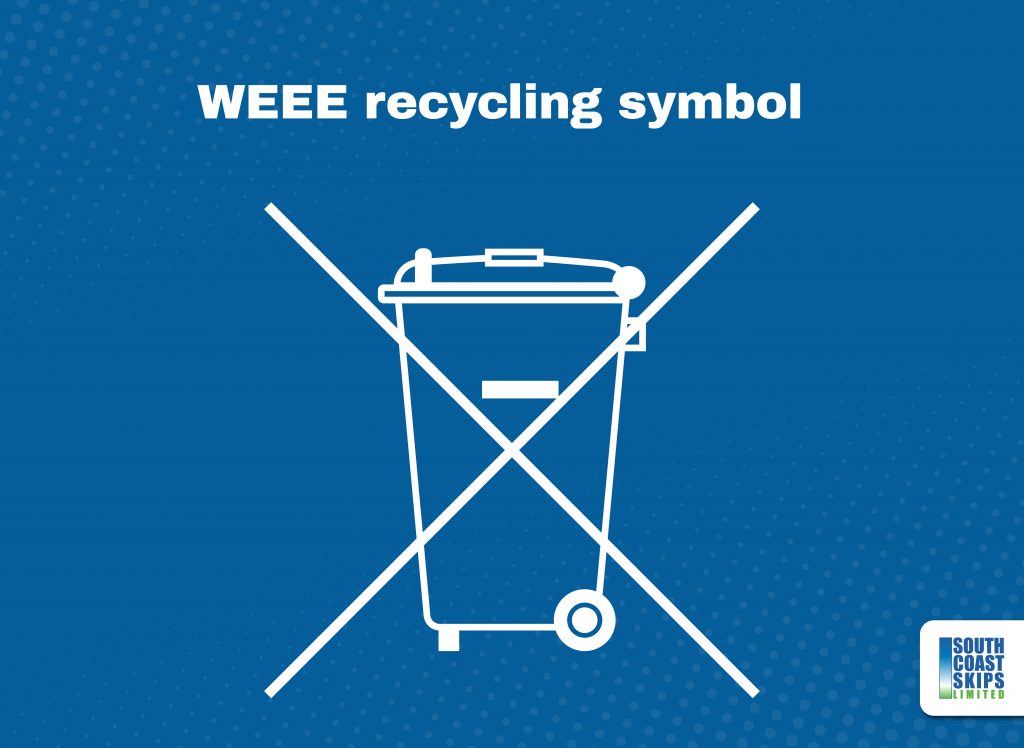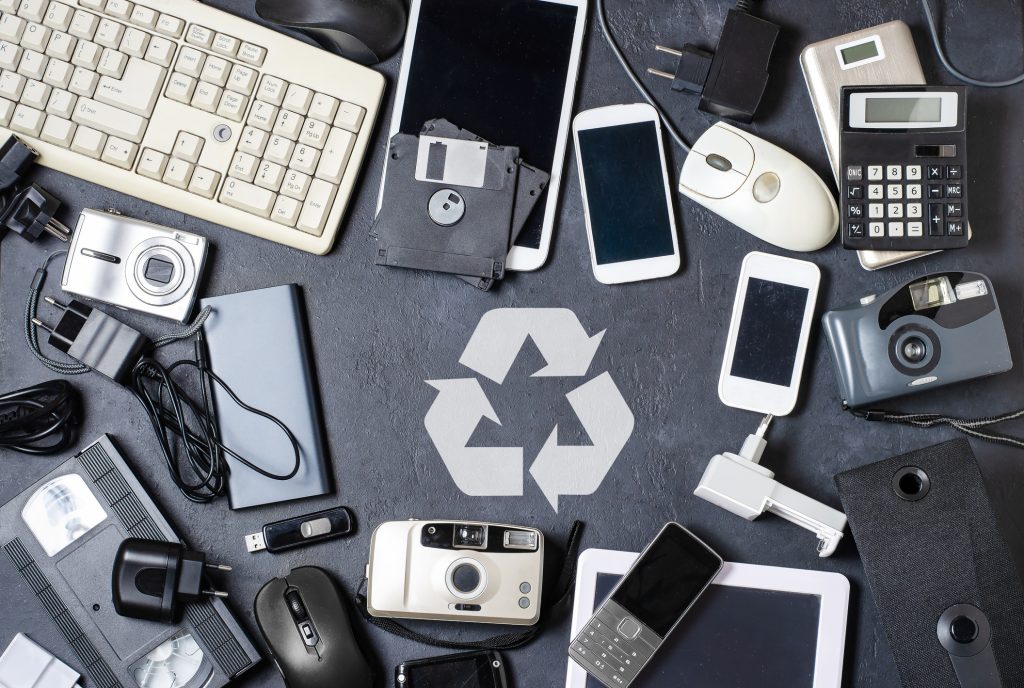WEEE Recycling Guide
According to the Health and Safety Executive, here in the UK, we produce around 2 million tonnes of WEEE waste each year. This staggering fact, when paired with rising global population figures, means that we need to think more carefully about what we buy and how we dispose of it.
This month at SCS Waste, we’re going to guide you through everything you need to know about WEEE recycling, including what it actually stands for, the symbol to look out for, why it’s important and other handy information — all with the hope of inspiring everyone to adopt WEEE recycling practices at home and at work.

What does WEEE stand for?
WEEE stands for Waste Electrical and Electronic Equipment. It’s a term that has been around for a couple of decades now, so it should be more familiar to more people than ever before. It tied in closely to the EU and UK directives on electronic waste, grouping up all the electrical items with electrical components, circuits and some form of power supply to help categorise the waste.
You can see a list of some of the most common WEEE items later in this quick guide.
What is the WEEE symbol?
The WEEE symbol is a simple line drawing of an average wheelie bin crossed through diagonally. It is sometimes called the ‘crossed out bin’ symbol. This is to denote that the item in question should not be disposed of via your household waste or in an ordinary bin.
The symbol is sometimes accompanied by a thick black bar beneath it — this means it was produced after the WEEE directive was put in place, as per EN 50419 instructions.

Why is WEEE recycling so important?
As with any recycling, WEEE recycling is important because it helps us to preserve the natural resources we have at our disposal. By recycling the precious metals that are often present in electrical items, we don’t have to mine for more. Mining is a process that is damaging to the environment in so many, irreversible ways.
If we were to dispose of all our electrical waste in landfill sites, as was the previous practice, we would lose a lot of those resources for good. Eventually, because it is not a renewable material, we would run out of places to safely mine and these types of items would undoubtedly start to rise rapidly in price.
What is the WEEE recycling process?
Because there are many different materials within a single electronic device or appliance, the recycling process can vary. However, much of this waste will need to be stripped and shredded, with ordinary metals and plastics separated out using machinery and magnets.
As well as the above, the more precious raw materials (and hazardous ones, such as batteries) need to be identified, often picked out by hand on a conveyor and then kept for further processing. Depending on the items and the materials, your WEEE item could be separated into numerous recyclable materials, allowing for it to be put back into manufacturing or for use in another way that avoids it going into a landfill site.
Examples of WEEE waste

With so many WEEE items in every home and business, you might be surprised by the quantity of them. Here are just some common categories and associated items:
Large household appliances
- Refrigerators
- Washing machines
- Dishwashers
- Microwaves
Small household appliances
- Toasters
- Kettles
- Vacuums
- Irons
- Hair dryers
IT & smart devices
- Mobile phones
- Personal computers
- Monitors
- Laptops
- Printers
Entertainment devices
- Televisions
- Games consoles
- DVD players
- Electronic toys
Lighting equipment
- Fluorescent tubes
DIY & gardening tools
- Drills
- Saws
- Lawnmowers
Commercial building devices
- Smoke alarms
- Thermostats
- HVAC components
For all your WEEE recycling requirements in Bognor Regis, Arundel and Littlehampton, look no further than SCS Waste. Our dedicated services help homeowners and businesses in a variety of sectors to responsibly dispose of WEEE items. We’re committed to recycling as much of your waste as possible and have our own waste transfer station to help us achieve this aim.
To arrange for the collection of your WEEE waste via our specialist fleet of vehicles, contact us today and we’ll be happy to help you do your bit for the planet.

